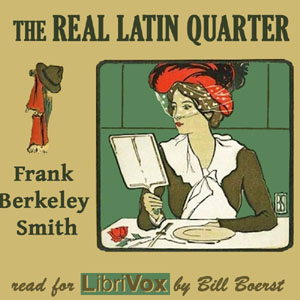
“Cocher, drive to the rue Falguière”–this in my best restaurant French.
The man with the varnished hat shrugged his shoulders, and raised his eyebrows in doubt. He evidently had never heard of the rue Falguière.
“Yes, rue Falguière, the old rue des Fourneaux,” I continued.
Cabby’s face broke out into a smile. “Ah, oui, oui, le Quartier Latin.”
And it was at the end of this crooked street, through a lane that led into a half court flanked by a row of studio buildings, and up one pair of dingy waxed steps, that I found a door bearing the name of the author of the following pages–his visiting card impaled on a tack. He was in his shirt-sleeves–the thermometer stood at 90° outside–working at his desk, surrounded by half-finished sketches and manuscript.
The man himself I had met before–I had known him for years, in fact–but the surroundings were new to me. So too were his methods of work.
Nowadays when a man would write of the Siege of Peking or the relief of some South African town with the unpronounceable name, his habit is to rent a room on an up-town avenue, move in an inkstand and pad, and a collection of illustrated papers and encyclopedias. This writer on the rue Falguière chose a different plan. He would come back year after year, and study his subject and compile his impressions of the Quarter in the very atmosphere of the place itself; within a stone’s throw of the Luxembourg Gardens and the Panthéon; near the cafés and the Bullier; next door, if you please, to the public laundry where his washerwoman pays a few sous for the privilege of pounding his clothes into holes.
It all seemed very real to me, as I sat beside him and watched him at work. The method delighted me. I have similar ideas myself about the value of his kind of study in out-door sketching, compared with the labored work of the studio, and I have most positive opinions regarding the quality which comes of it.
If then the pages which here follow have in them any of the true inwardness of the life they are meant to portray, it is due, I feel sure, as much to the attitude of the author toward his subject, as much to his ability to seize, retain, and express these instantaneous impressions, these flash pictures caught on the spot, as to any other merit which they may possess.
Nothing can be made really _real_ without it.
F. HOPKINSON SMITH.
Paris, August, 1901.
(from Introduction)

Other Audiobook
Audiobook: Land of the Broads
The Broads area of Norfolk and Suffolk is in the East Anglian region of England.
Audiobook: Popular History of Ireland, Book 07
Thomas D’Arcy McGee was an Irish refugee and a father of the Canadian confederation. His
Audiobook: Sammlung kurzer deutscher Prosa 024
Diese Sammlung umfasst 15 deutschsprachige Prosa-Texte verschiedener Genres.
Audiobook: Practice and Science of Drawing
This book is an attempt to teach beginning students how to draw. Starting out with
Audiobook: Love for Love
“We have such a gallery, if not of great characters, at any rate of strongly-marked
Audiobook: Short Nonfiction Collection, Vol. 052
Seventeen short nonfiction works in the public domain, independently chosen by the readers. Topics include
Audiobook: Rover Vol. 01 No. 22
“The Rover: A weekly magazine of tales, poetry and engravings, original and selected” was a
Audiobook: Prairie Traveler
Commissioned by the US War Department and written in 1859 by a decorated US Army
Audiobook: National Geographic Magazine Vol. 08 – 10. October 1897
The National Geographic Magazine, an illustrated monthly, the October Number. It includes the following articles:
Audiobook: Lives of Poor Boys Who Became Famous
These characters have been chosen from various countries and from varied professions, that the youth
Audiobook: The Perfect Wagnerite
The Perfect Wagnerite: A Commentary on the Niblung’s Ring (originally published London, 1898) is a
Audiobook: Pirates Of Penzance; Or The Slave Of Duty (Version 2)
In this recording, one person reads the entire play, all parts, including the stage directions.